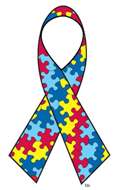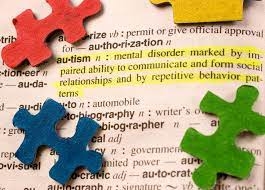Autism Q&A
With Nicole Wozniak, Psy.D
What is Autism?
A neurodevelopmental disorder characterized by social, emotional, and/or communication problems. Individuals with autism may exhibit repetitive, stereotyped behaviors and have difficulty adapting to changes in structure or routine. These individuals may have different ways of learning, reacting to their environment, and paying attention.
in structure or routine. These individuals may have different ways of learning, reacting to their environment, and paying attention.
What happened to Asperger’s?
Long story short…nothing! We just changed the name. In 2013, when the newest version of the Diagnostic and Statistical Manual of Mental Disorders (DSM-5) was released, the diagnosis of Autism Spectrum Disorder was created to envelope several previously separate diagnoses (Autistic Disorder, Asperger’s Syndrome, and Pervasive Developmental Disorder). Now, psychologists and doctors simply specify the severity of the disorder and any accompanying characteristics of intellectual or language impairments, as appropriate. A current Asperger’s diagnosis today would likely be written as Autism Spectrum Disorder, Level One.
If I’ve met someone with autism, I probably have a good idea of what to expect from others with autism, right?
Wrong. The saying goes, “If you’ve met one person with autism, that means you’ve met one person with autism.” Remember that autism is a spectrum for a reason. It ranges all the way from individuals who are extremely high functioning, who will tell you exactly how they want you to communicate with them, to individuals who don’t use verbal communication at all. Sometimes, it is even okay to ask them directly how to best communicate. There is no harm in talking about autism. It actually does more harm to pretend like it doesn’t exist!
I’ve heard of something called, “stimming.” What is that?
Self-stimulating behavior, or stimming, is a repetitive body motion or repetitive movement of objects. It can also include other behaviors, such as staring at objects or humming. People with autism may stim because they feel excited, overwhelmed, stressed, or anxious, or simply because it feels good. The research behind why this behavior is soothing to individuals with autism, or other developmental disorders, is largely unknown, but it is assumed to have something to do with the activation of dopamine in the central nervous system.
Is stimming something I need to change or fix?
In short, no. The only time we recommend changing a self-stimulating behavior is when it is causing harm to the individual. Otherwise, stimming is a way for individuals with autism to communicate and self-soothe. Taking away that option can often do more harm than good!
How do I communicate effectively with a person who has autism?
1. Remember we are all human. Individuals with autism may communicate differently, but that doesn’t mean they don’t want to communicate at all.
2. Don’t talk down. Do not assume that someone with autism who is also nonverbal is also unintelligent. Remember to be patient. The individual with whom you are speaking may be working hard to process what you’ve said! Do not get louder if you feel misunderstood or it is taking a long time to get a response. Just be patient.
3. Not using eye-contact is okay! Some people with autism struggle with maintaining eye contact. It is perfectly fine to have a conversation without eye contact sometimes.
4. Speak directly using clear and concise language. Try to speak plainly, removing any unnecessary fluff language, and don’t be offended if they speak to you bluntly in return.
5. Remember that with or without autism, everyone communicates differently. Just as you would learn what works and what doesn’t with someone not on the spectrum, afford individuals with autism the same courtesy!


